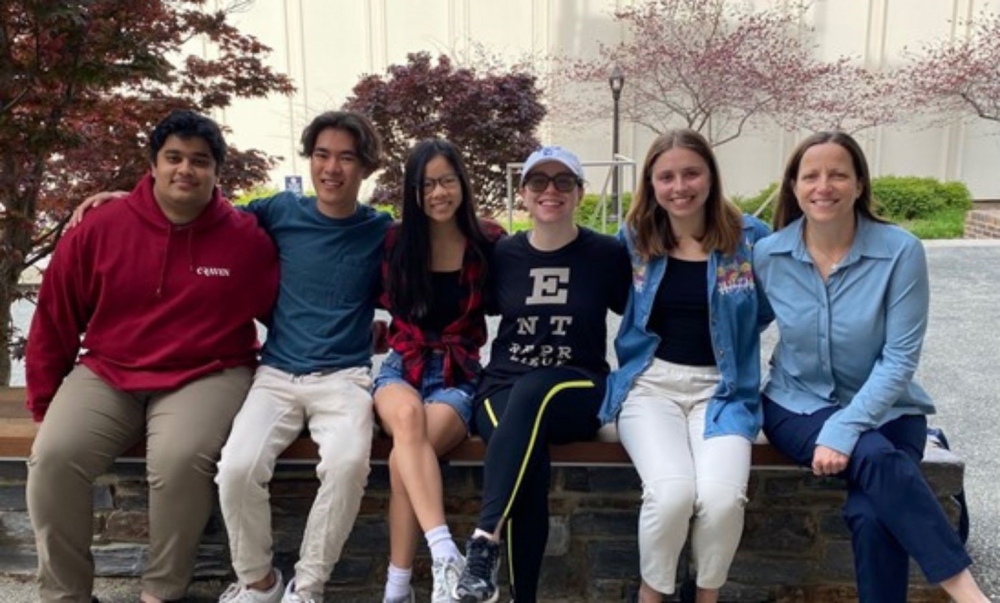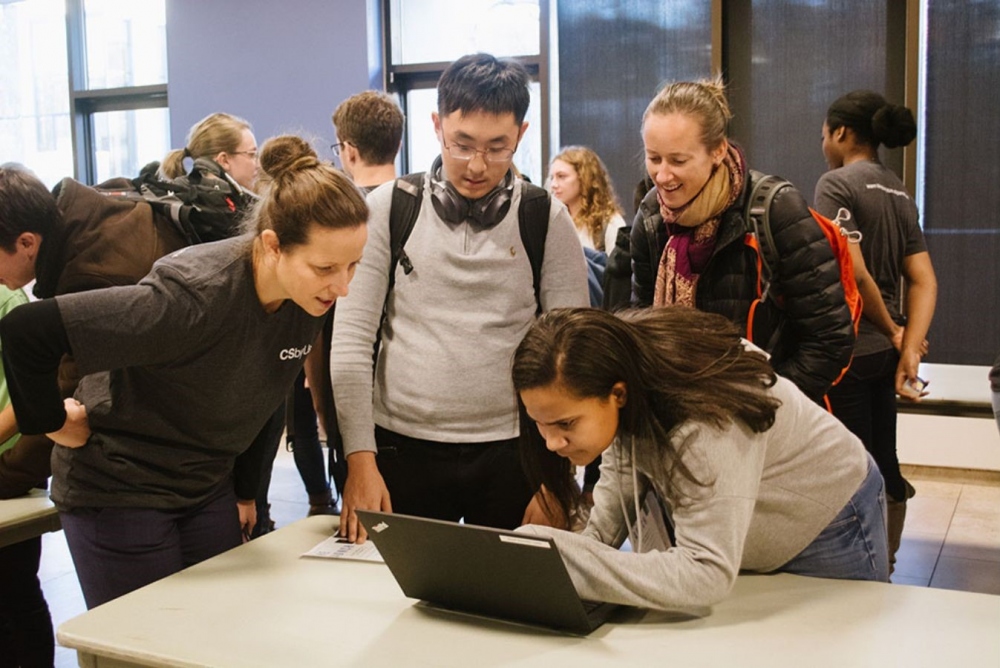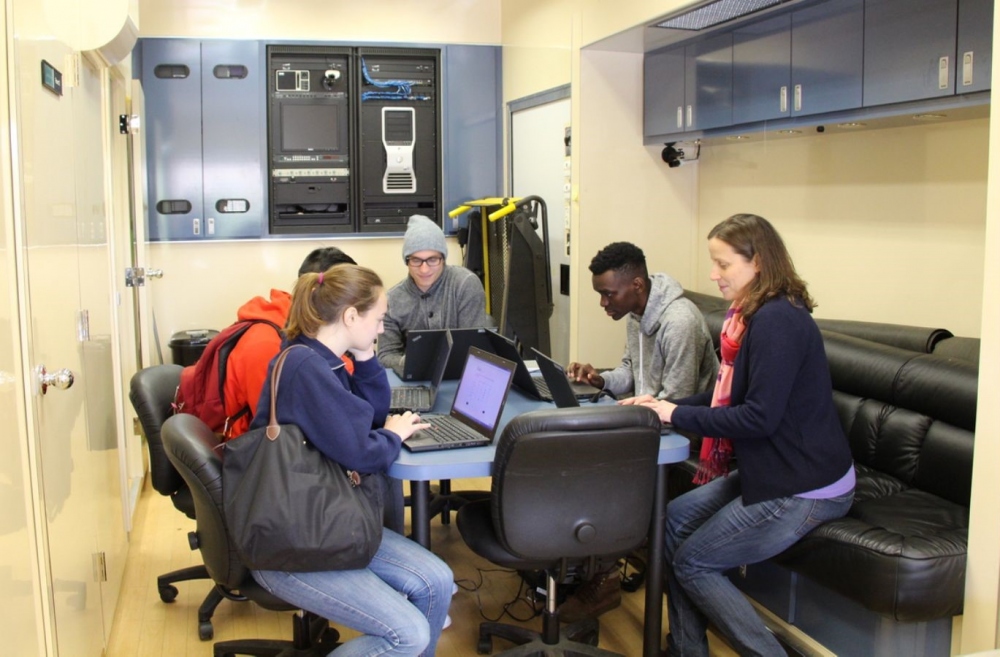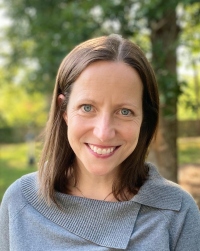Faculty Perspectives: Aria Chernik
Aria Chernik, Associate Professor of the Practice in the Social Science Research Institute
Bass Connections Project Teams: The 21st Century Student: Open Knowledge and Education Innovation; OSPRI Lab: Open Source Education Technology; Open Source Pedagogy, Research + Innovation (OSPRI) Lab; OSPRI Lab: CSbyUs; Open Design at Duke and Beyond; Open Design Studio: Participatory Solutions for Human Flourishing; Building Next Generation Learning at Duke
Aria Chernik has been leading Bass Connections teams since 2016. Her projects primarily center around improving education and meeting other societal needs through the collaborative "open design" process. She shared her perspective and advice during a Bass Connections team leader orientation in January 2023.

Creating Opportunities
Bass Connections has been one of the most exciting and sustaining parts of being a faculty member at Duke. I have been involved in Bass Connections for a number of years, running my first team in 2016.
The students on one of my early project teams worked with community partners to create justice-centered computer science (CS) education for kindergarten through 6th grade students. The team focused on increasing the self-efficacy of educators who were being asked to teach CS but have never done so and had no training in it. We also explored how to encourage kindergarten through 6th grade female students and students of color to see themselves as thriving in CS and technology education.
Through this project, I discovered one of the things I love most about Bass Connections: it allows me to quickly and effectively create opportunities for student engagement and learning. Duke has all these students who are very passionate about education but don’t necessarily want to be teachers or go into a formal education track. Because it’s so flexible, Bass Connections allows me to provide opportunities for these students to engage deeply and authentically in education-focused work, even when they’re not planning on doing that as a career.

My more recent project is called Open Design Studio: Participatory Solutions for Human Flourishing. The focus of this multiyear team is equitable, community-engaged co-design for human flourishing. We are using open design, which is a methodology for equity-centered innovation, to think about larger design questions. For example, what if stakeholders who have been traditionally excluded from the innovation and decision-making process came to the table with our students, our faculty leads and with community organizations in a collaborative, co-creative way?
Blueprints for Collaboration
Our Open Design Studio project is divided into four subteams: one focused on education, one on necessity-driven entrepreneurship, one on climate resilience and one on “community tech.” The team comes together as a whole to discuss big, overarching questions about the design process, and each subteam has also developed its own design challenge to address.
Each subteam has a faculty or staff leader. We also have four “open design strategists,” who operate as project managers. Three are graduate students, and one is an advanced undergraduate. Finally, each subteam has at least one community co-design partner that they’re working with very closely.

In terms of academic background, we have students from all across Duke. Our undergraduates’ majors range from economics and sociology to computer science and biomedical engineering. Several graduate and professional programs are also represented, including public policy, environmental management and innovation and entrepreneurship.
Learning in Process and Partnership
It’s impossible to separate the challenges we face as a team from our successes. Bass Connections allows me to teach in ways that I likely would not be able to otherwise — including in a way that can get messy sometimes. Much of the work we do is process-focused and outward-facing, and it is often new for students to negotiate the expectations of community partners.

This hands-on messiness allows students to grow in ways they couldn’t do in an average lecture course. It’s all about maintaining balance. We want students to really go through the process of deep experiential learning; and yet we know we need to hit our milestones and deadlines, especially because we're working with community partners.
Differences between students on the team can also be both an asset and a challenge. You’ll likely have students with different interests, competencies and skills on your team. When you allow students to follow their own interests, you can end up with many different types of deliverables, which can make grading difficult. For example, how do you grade a multimedia project report versus a set of qualitative data?
Setting Expectations
To overcome the challenge of differing outputs, I work with the students to create a team charter at the beginning of each year. We spend at least a class period really digging into questions of what we want to accomplish. This also helps define roles, set expectations and build community. Of course, the project evolves from that point, especially when external partners are involved.

We address this evolution with what we call a live workflow calendar. This is similar to a syllabus, mapping out the milestones that we want to hit. At the same time, we’re always emphasizing that this is real-world research and a development project, and things may change depending on what we find. It’s very helpful to have some kind of informal, collaborative communication so students can share their progress and we can adjust our calendar accordingly. It’s great to see them cheer each other on and celebrate new findings.
Another key strategy we’ve used is to keep our teams motivated and excited about the work is varying how we deliver content, discuss new concepts and work through questions. Sometimes we will have a workshop or a speaker that’s relevant to where we are in the project. Sometimes subteams will share what they’ve been working on and support each other. We also make sure to provide opportunities for students to reflect on what they’ve accomplished, what the roadblocks are and where they’re going next.
See other faculty perspectives and learn how you can get involved in Bass Connections.

